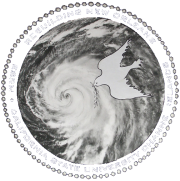Morning Call Cafe


 Yesterday we had the pleasure of meeting Mark Sanders, the founder of Basin Street Records. In nostalgic fashion, we met at the Morning Call Cafe, where Mark worked in 1978 and we had coffee and beignets for breakfast. He spoke to us about his label, the music industry in New Orleans, and his experiences with hurricane Katrina.
Yesterday we had the pleasure of meeting Mark Sanders, the founder of Basin Street Records. In nostalgic fashion, we met at the Morning Call Cafe, where Mark worked in 1978 and we had coffee and beignets for breakfast. He spoke to us about his label, the music industry in New Orleans, and his experiences with hurricane Katrina.
Mark started his record label in 1998. He worked with local jazz greats like Irvin Mayfield, Bill Summers, Kermit Ruffins, and Jason Marsalis. By 2005, the label had six full time employees and a work space. Then Hurricane Katrina struck Louisiana, bringing devastation and chaos to all aspects of life in New Orleans. Temporarily, Mark relocated to Austin, Texas. Despite losing the work space, his home, and many other obstacles, he stayed steadfast in his determination to pursue his passion and share the sounds of New Orleans with the world. He managed to keep the label alive by working out of coffee shops.
Since then, the label has made a miraculous rebound and seems to be as strong as ever. Currently, they have 3 full time employees and work out of Mark’s home. They are still putting out albums and finding fresh new artists that exemplify the spirit and resilience of New Orleans.















 While burning excess gases from oil production is a common theme in Southern California, I had never witnessed a flare of this magnitude and quite so close to ground level. Yet, this flare was relatively minute in comparison to the large off-gasing that occurred on March 10th.
While burning excess gases from oil production is a common theme in Southern California, I had never witnessed a flare of this magnitude and quite so close to ground level. Yet, this flare was relatively minute in comparison to the large off-gasing that occurred on March 10th. To get the full story we visited Mark Schleifstein, Environmental Reporter at
To get the full story we visited Mark Schleifstein, Environmental Reporter at 












